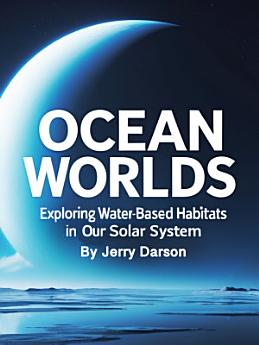Ocean Worlds: Exploring Water-Based Habitats in Our Solar System
About this ebook
The notion that water might exist beyond Earth is not new. Early telescopic observations of Mars revealed polar ice caps, hinting at the presence of water. However, it wasn’t until the advent of space exploration that the idea gained traction. Missions like Viking, Galileo, and more recently, Cassini and the Mars rovers, have significantly advanced our understanding. These missions have provided tangible evidence of water in various forms—ice, vapor, and even signs of liquid water beneath surface layers.
Key to this quest is the concept of the “habitable zone,” the orbital region around a star where conditions may be just right for liquid water to exist. Yet, discoveries in our own solar system have shown that this zone may be more flexible than once believed. Moons such as Europa and Enceladus, though located far from the Sun, possess internal heat sources that could maintain subsurface oceans. This challenges the traditional idea that proximity to a star is necessary for liquid water to exist.







